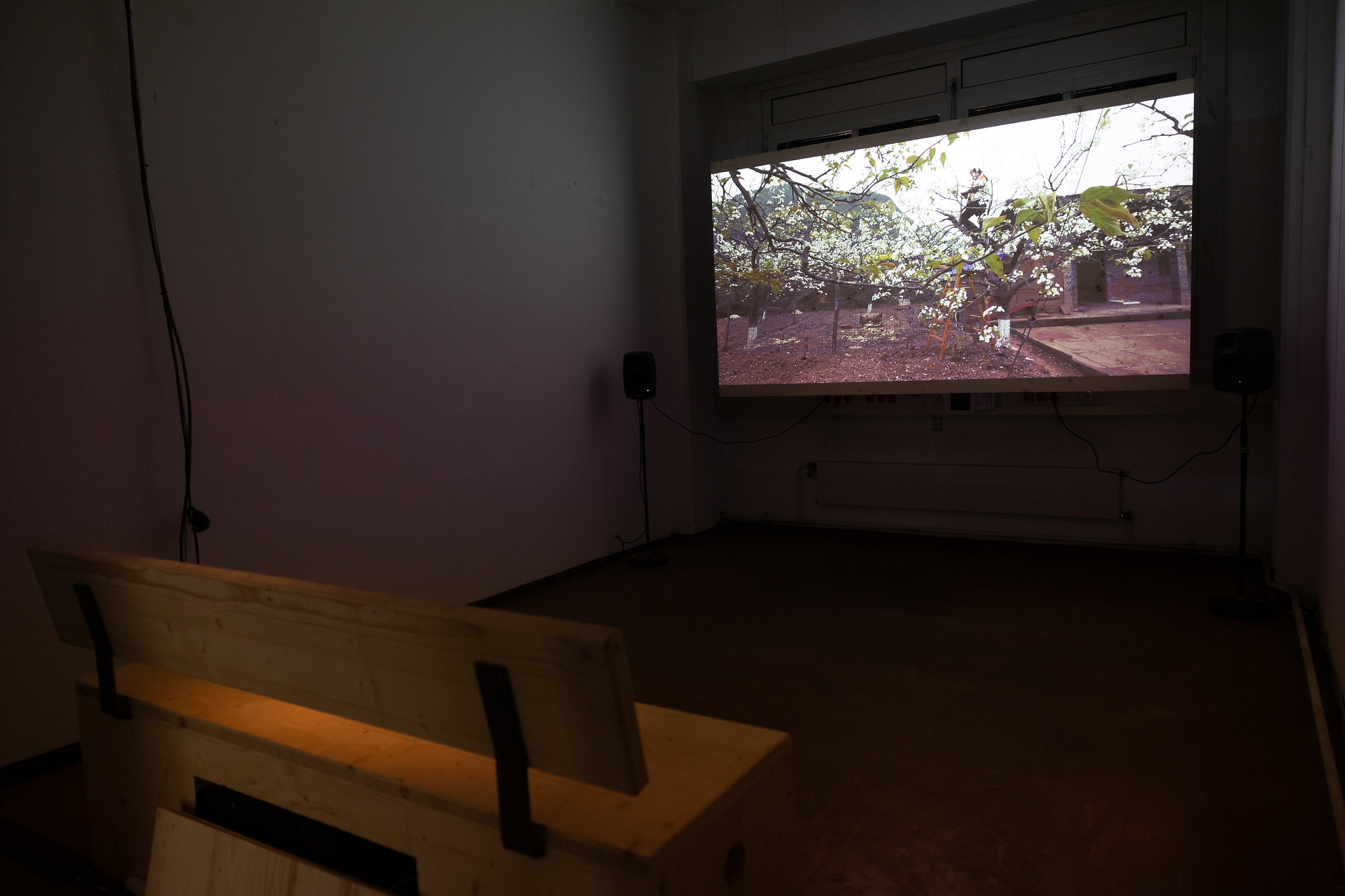Artificial Intelligence & Life Art
Honorary Mention
How will humans (and their robots) continue the reproduction of fruits after the bees are gone? An investigation into two responses to colony collapse disorder—a compendium of forces that threaten the extinction of honey bees, a ”companion species” upon whom the global agricultural system depends.
In China, human laborers inseminate pear flowers by hand, one-by-one, on an industrial scale. Biomimetic design is done with cigarette filters on a tiny family farm in Cangxi, and with chicken feathers on the largest fruit orchard in the world in Anhui. Every spring, 7,000 day laborers arrive in Anhui to inseminate pear flowers. As Chinese salaries grow, pollination labor is becoming too expensive for pear production to remain profitable, and simultaneously the middle class has given rise to the domestic Chinese tourist. A rural town invents a ”traditional pear blossom festival”, and in the hope that if there are no pears in the future, at least the flowers will attract tourists and their money.
Meanwhile at a Harvard University laboratory, engineers are building the Robobee—tiny drones designed in close study of insect morphology, ostensibly for artificial pollination. Evolutionary design is extracted from natural systems in order to build efficient robot drone “bees” folding the drone metaphor back in on itself.
An investigation of life and death, labor and technology, and interspecies sex in an era of late-stage capitalism and ecological crisis.
Jury Statement
This video investigates the management of artificial life by robots eventually controlled by artificial intelligence. Machines managing natural systems show the closed circuit of technology impacting ecosystems while using new technology to repair the ecological damage. The decline of bees is due to the Colony Collapse Disorder syndrome caused by engineered chemicals and the mass extinction of insect pollinators is caused by greenhouses gases generated for energy consumption. In this video, the economic and political consequences of ecosystems breakdown are integrated with technological solutionism, juxtaposing the personal and social aspects of such integration. The format of the video essay makes this documentary a compelling artwork reflecting on the meaning of artificial life.
Excerpt from the jury statement
Credits
A work by Miriam Simun.
This work is supported by Creative Capital with additional support by MIT List Visual Arts Center and La Becque.
Supported by ONX/Onassis Foundation, Creative Capital and MIT List Center for the Visual Arts.
Miriam Simun (US)
Miriam Simun works at the intersection of ecology, technology and the body, spanning multiple formats including video, performance, installation, drawing, writing, and communal sensorial experiences. Trained as a sociologist, Simun adopts the position of “artist-as-fieldworker,” conducting in-depth and corporeal research that guides the final material form of the artworks. Recurring questions revolve around the role of the sensorium in scientific and ecological knowing, shifting interspecies relations amidst rapid ecological crisis and technological development, and the construction of knowledge and violence of categories. Simun’s work has been presented internationally.





